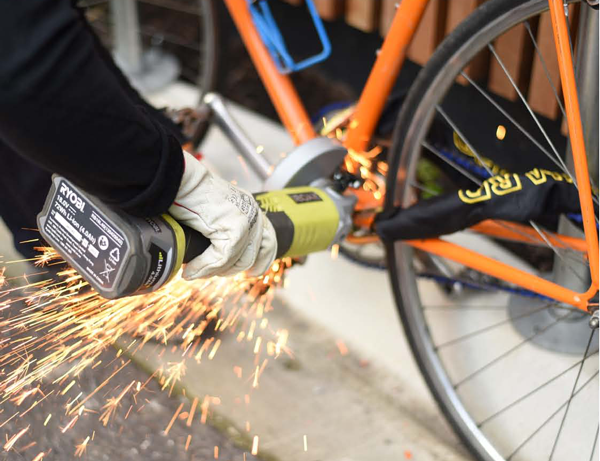Simon Vincett talks smart bike security and then takes the tools to the best bike locks to find just how much protection they really offer.
Like a chain is only as strong as its weakest link, the security of your bike is only as good as the best opportunity it offers a would-be thief. Did you leave your bike locked up overnight at uni or the train station or the pub? Did you choose the cheaper cable lock instead of the heavier, more expensive D-lock? Did you leave your bike unlocked in the garage while you went away on holidays? All these situations are opportunities for thieves, and common ways for bikes to be stolen.
All security is just discouragement – it can’t guarantee that your bike won’t be stolen. All bike locks can be broken – as we show in our testing – but some locks are harder to break than others and there are many ways that you can make your security as effective as it can be. The better your lock and the smarter your security strategy, the less likely it is that you will have to endure the loss of your bike.
Ride On testing is done in a real-life scenario to best assess the effective security of a variety of bike locks. This includes breaking the lock without damaging the bike. We use tools that can be stashed in a sports bag carried by a person on foot. Therefore, the bolt cutters are 63cm in length and the angle grinder is battery powered, for instance.
The locks are used to secure a bike to a parking rail and then attacked by various methods that would be realistically employed by bike thieves. The locks are first attacked with a hammer, which the 2011 test showed is sometimes successful. Next we try boltcutters, and in some cases multiple tools in tandem. Finally, we use a battery-powered angle grinder. The attacks are timed and abandoned if continuation seems futile.
Note, a car jack is cited as a method of breaking locks but our testing has found them ineffective because they do not fit inside a lock when it is in use around a bike and a solid anchor. We have also never tested the validity of freezing the lock in order to shatter it, or mastered the art of picking locks. Cylindrical key locks that found fame for being vulnerable to picking with a biro have disappeared from all but the cheapest locks.
From our testing – and an overall assessment – of current bike locks on the Australian market, Ride On recommends the best locks to provide high, medium and low security depending on the level of risk you’re dealing with. Our Top 40 table (below) provides a rating and details of the locks tested, ranking them in order of performance. We recognise that some locks are not meant to be used in high-risk situations, so we assess them accordingly. The overall score of each lock relates to other locks within its same type, so a medium security lock with an overall score of 80% is not more secure than a high-security lock with an overall score of 75%.
But before choosing a lock – or to maximise the effectiveness of your current set-up – there are some key things to know to sharpen up your security strategy.
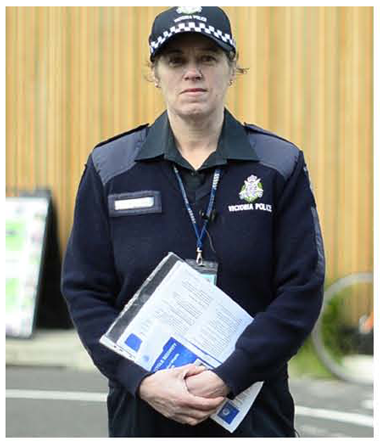 Leading Senior Constable Janie Lambert – a Crime Prevention Officer with Victoria Police – observed the testing of bike locks by Ride On this year, conducted in part at the Alfred Hospital’s impressive bike-parking facility. From her many years of working on crime prevention in inner Melbourne, Lambert knows what weaknesses thieves seize on to steal bikes: “It’s very important that people consider what sort of lock they use to secure their bike. A high-security lock will take longer for an offender to get into. But it’s also important where people park their bikes as well – try and make sure you park it in a place that it’s going to be seen by a lot of people.
Leading Senior Constable Janie Lambert – a Crime Prevention Officer with Victoria Police – observed the testing of bike locks by Ride On this year, conducted in part at the Alfred Hospital’s impressive bike-parking facility. From her many years of working on crime prevention in inner Melbourne, Lambert knows what weaknesses thieves seize on to steal bikes: “It’s very important that people consider what sort of lock they use to secure their bike. A high-security lock will take longer for an offender to get into. But it’s also important where people park their bikes as well – try and make sure you park it in a place that it’s going to be seen by a lot of people.
“Here at the Alfred Hospital they have a secure parking facility for their bikes which is covered by cameras and requires ID to enter. People can tailgate in though, and then they can steal your bikes. Never think you’re in a secure place – you need to lock your bike as well.
“It’s not just when you’re out and about or at work; it’s at home as well. We have residential apartment buildings where people tailgate into the building and they steal bikes. So you really need to remember to lock your bike at home and at work.
“Police get a number of stolen bikes [that] we can’t track back to the owner. We recommend that you record the serial number on your bike and that you consider having it engraved. You should photograph your bikes as well.”
Victoria Police suggest Four easy steps to secure your bike in their Bicycle Security brochure.
Lock smart
Managing the risk of bike theft has three aspects: avoidance, protection and recovery. None of these aspects can be made failsafe, but all can be managed.
Avoidance
Some places and times simply can’t be made secure. Avoid leaving your bike locked up outside overnight, especially at uni campuses, train stations and on inner-city streets.
Choose parking spots that are as public and visible as possible. Don’t be tempted to leave your bike unlocked, even briefly while you duck into a shop. A lot of crime is opportunistic and the time it takes to lock up far outweighs the hassle of replacing a bike.
Enrol for a secure shared bike parking cage at a train station, such as Parkiteer in Victoria or the bike shelters on the TransPerth network using SmartRider. A few of these are popping up in Sydney as well.
Protection
At any time, parking at major sporting events, universities, train stations and large workplace or residential parking facilities are situations with very high risk due to the wealth of opportunity they offer thieves. Managing the risk of parking here requires your best security strategy.
Have a lock that is appropriate for the level of risk of the parking situation. That means make it a high security lock unless you’re sure the situation is medium or low risk. See The Locks below for what makes a good lock and what level of security they offer.
Lock the frame of your bike to an immoveable object. Don’t lock by the wheels because they are quite easy to take off and then the thief can take the rest of the bike away. At home and in your workplace you can install secure anchors (see below) if required to provide an immoveable object.
Use the full extent of the lock and try to fill the space inside it. Generally this makes the lock harder to attack. Having it tight on the bike also makes it harder to attack the lock without damaging your bike, which is undesirable to a thief because it reduces its resale value.
Avoid locking to a horizontal bar if possible. Vertical bars make it harder to stabilise the lock to work on breaking it.
Remove valuable components such as lights and secure wheels or seats with quick releases with extra locks or an ancillary cable. Better still, install locking skewers or Hexlox.
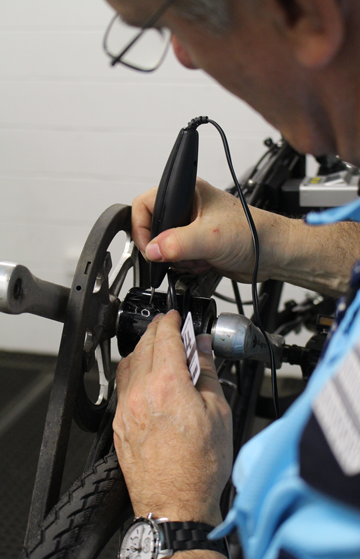 You could leave your lock at your workplace or house (or both) so that you have the extra security benefit of a heavy one without having to carry it around. Of course, this leaves you without a lock when you’re out and about and need to lock up somewhere else.
You could leave your lock at your workplace or house (or both) so that you have the extra security benefit of a heavy one without having to carry it around. Of course, this leaves you without a lock when you’re out and about and need to lock up somewhere else.
Photograph identifying features of your bike to prove that it’s yours. Record its serial number (usually it’s under the bottom bracket, which is the part of the frame that holds the bearings allowing the cranks to spin).
Even better, engrave your passport or drivers licence number beside the serial number. Don’t do this to a carbon fibre frame, however, and on a steel frame, coat the engraved area with clear nail polish or similar to prevent rust.
An alternative to engraving is to purchase a tracking product such as DataDot, Cycle Leash, Cricket or Tile. These all offer different benefits and have varying effectiveness. Ride On has reviewed the DataDot DNA Bicycle kit.
Recovery
To recover your bike if it is stolen requires you to find it and prove that it’s yours. If you’ve fitted a tracking device, you’ve maximised your chances of finding the bike and identifying it. Otherwise, if you’ve photographed it and engraved it you can hope to prove it’s yours should it turn up.
Finding a bike once it’s stolen is not very likely. An account of a bike lost and luckily found published previously by Ride On illustrates the distress that can come from bike theft and difficulty of recovery.
Police believe the bicycles are stolen and then sold on the street for a tenth of their retail value, as well as through online classified websites i.e. eBay, Gumtree etc. Other bicycles may also be stripped and the parts disposed of online etc.
If you see someone acting suspiciously Ring ‘000’ or if you have information in regards to a crime either ring Crime Stoppers on 1800 333 000, report it online at www.crimestoppers.com.au or through the iPhone app Stop Crime.
Depending on the value of your bike and the premium you can access, insuring your bike against theft may be cost effective. Usually this is done as a part of your home and contents insurance. Ask your insurance company for details. Bicycle Network suggests Cycle Safe.
Keep up with the latest developments in bike theft prevention with Bicycle Network.
The locks
The locks we list on the Top 40 table below are a selection of the best in Australia. These are the ones you’ll come across in bike shops and that you’ll see people using.
As a general rule, thickness and weight are directly proportional to strength in a lock – the heavier it is, the stronger it is. Steel must be hardened to withstand bolt cutters. Other aspects like thick flexible coatings offer effective nuisance value against cutting.
Combination locks can quite easily be unlocked by ‘feeling’ for the combination, with numerous video tutorials available online. Key locks offer much greater security.
The locks we list are rated in comparison to others within their category, not between categories. For instance, a medium security lock is rated against other medium security locks and not against other high security or low security locks. Therefore, a medium security lock scoring 85% is not more secure than a high security lock scoring 80%. Look at the Security rating in the table for the level of security it offers. The Overall score considers its usability, price and appearance as well.
As well as categories, there are different types of bike lock, which each have their own pros and cons.
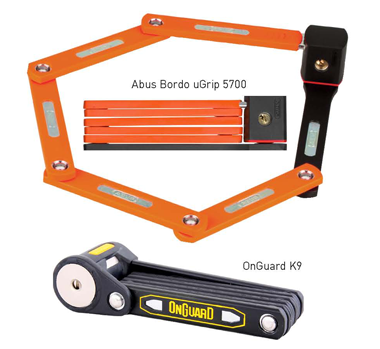
Folding
Now the best-selling type of lock for Abus in Australia
Most compact and easy-to-carry high-security option
Flexible to deal with varied lock-up situations
One cut to break, as opposed to two cuts for the best D-locks and chains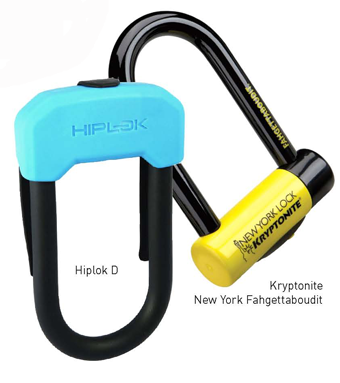
D-locks
Still the format of the very best high-security locks
the best require two cuts to release, doubling the attack time
most offer greater security than folding locks
weigh less than chains
not flexible
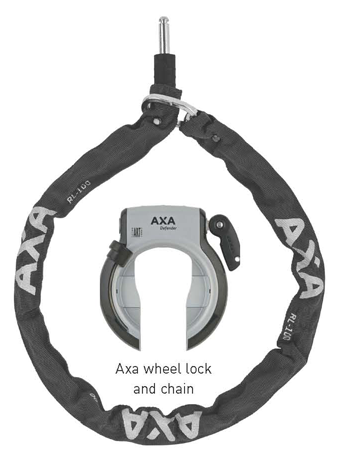 Wheel locks
Wheel locks
These don’t attach your bike to anything but lock the wheel so it can’t spin
very convenient to use
very awkward to cut through
doesn’t prevent your bike being carried away
the best have a socket for a cable or chain to lock to something
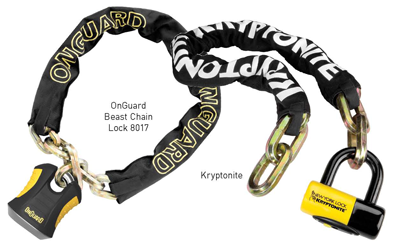 Chains
Chains
The best chains are some of the best high-security locks available.
the best require two cuts to release, doubling the attack time
flexible to deal with varied lock-up situations
very heavy for a high-security version
best left in place rather than carried around
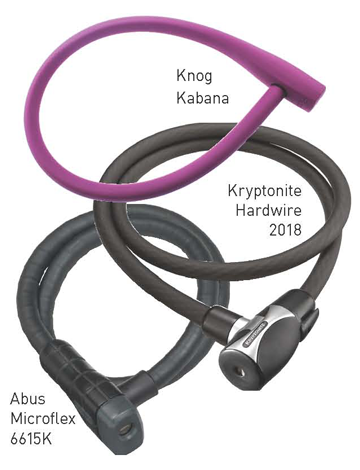 Cables
Cables
Even ‘armoured’ versions offer medium security at best
lighter and cheaper
flexible to deal with varied lock-up situations
can be cut with boltcutters and wire cutters
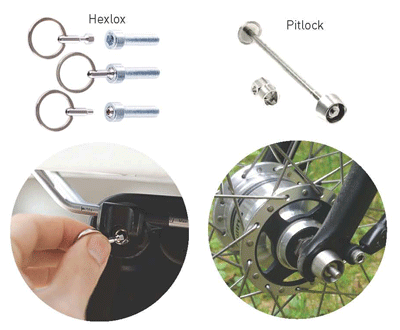 Component locks
Component locks
These secure your wheels, seat and other removeable parts
no need to use ancillary cable to secure wheels or seat
fastenings are no longer quick to release – in fact you must have your key tool with you to release them
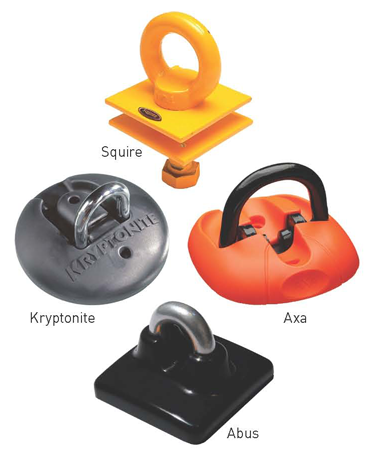 Secure anchors
Secure anchors
Strong shackles and anchor points for where you park your bike (check out Squire, Kryptonite and Abus)
ensures no weak point in your lock up situation
usually for one bike each
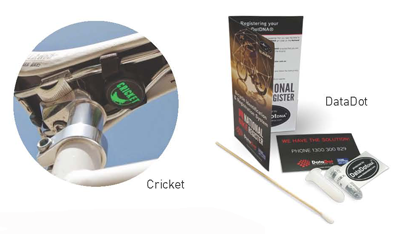 Tracking, ID and registration systems
Tracking, ID and registration systems
Technological promise for increased bike security (check out DataDot, Cycle Leash, Bike Guard, Cricket and Tile)
offer some improvement in prospects of finding your bike if stolen
alternative to engraving for carbon fibre frames
registration services allow police to contact rightful owner (if they access the database)
tracking products rely on a user network to locate your bike – if another user is not nearby your bike is not detected
See Ride On’s review of DataDot
Top 40 bike locks
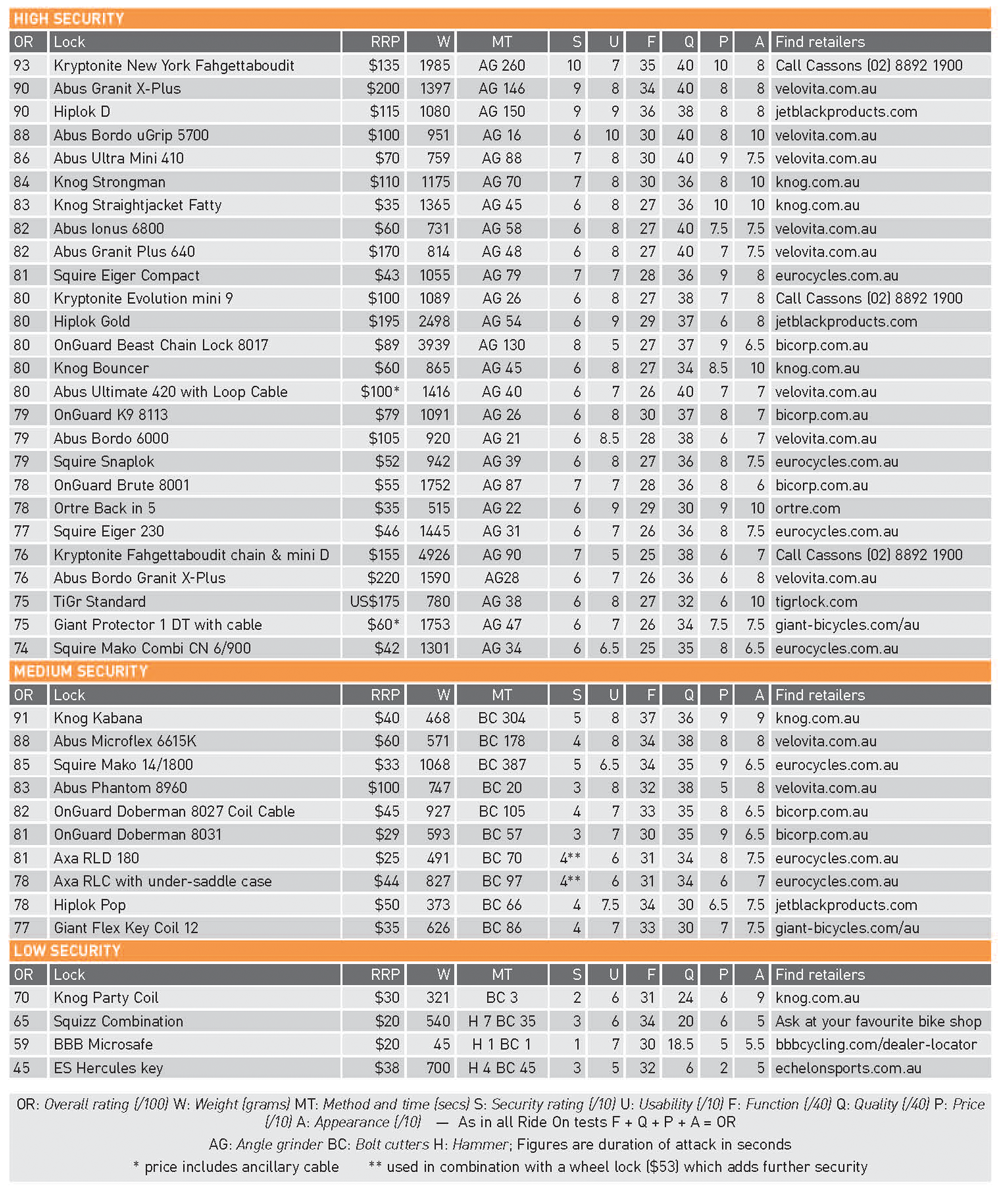 Ride On content is editorially independent, but is supported financially by members of Bicycle Network. If you enjoy our articles and want to support the future publication of high-quality content, please consider helping out by becoming a member.
Ride On content is editorially independent, but is supported financially by members of Bicycle Network. If you enjoy our articles and want to support the future publication of high-quality content, please consider helping out by becoming a member.

